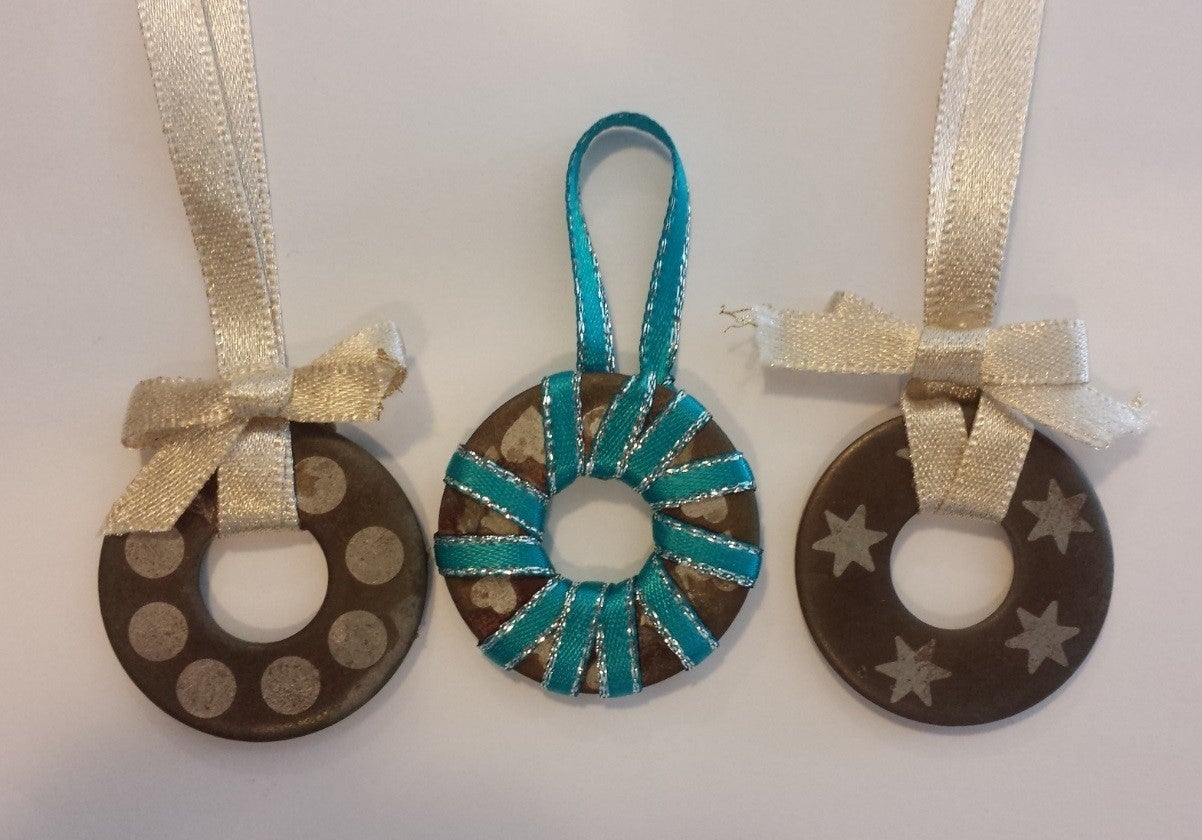Introduction
 Two years ago, we had students perform this modified lab during the last day of classes before winter vacation. It is a team effort in our department, and we typically rotate between two labs, alternating each year, so that all the senior chemistry classes (grade 11 and 12) can do the same lab. Having both grades do the same lab requires less set up and clean up as well as preventing duplication the following year. Last year we silvered test tubes as tree ornaments, which is always a class favorite. One year we did Poinsettia acid-base indicator snowflakes. These activities were a highlight for the students and provide an opportunity for good chemistry discussion at a hectic time of year.
Two years ago, we had students perform this modified lab during the last day of classes before winter vacation. It is a team effort in our department, and we typically rotate between two labs, alternating each year, so that all the senior chemistry classes (grade 11 and 12) can do the same lab. Having both grades do the same lab requires less set up and clean up as well as preventing duplication the following year. Last year we silvered test tubes as tree ornaments, which is always a class favorite. One year we did Poinsettia acid-base indicator snowflakes. These activities were a highlight for the students and provide an opportunity for good chemistry discussion at a hectic time of year.
The recipe for this lab came from a previous issue of Chem 13 News (Redox chemistry lab, December 2010, pages 1, 3-5). When we attempted the original lab we found that students struggled to cut the galvanized steel and clear tape into shapes and patterns. The procedure also posed a safety concern because the cut steel resulted in extremely sharp corners. We modified the choice of lab materials to include pre-purchased stickers and galvanized steel washers. Students easily decorated “wreaths” by adhering the stickers to them. The ribbon makes the ornaments seem even more festive. Students all remembered to take their ornaments home, which hopefully fostered more chemistry discussions.

Overview of wreath lab
The original lab was based on a Flinn Scientific Lab (ChemFax), Ornament-Making, A Holiday Redox Activity, Publication 10222, 2006. The ChemFax lab references Fun with Chemistry; Institute for Chemical Education, University of Wisconsin — Madison, 1994. This lab used pieces of galvanized metal whereas we used galvanized steel washers.
As a quick overview, the lab removes the layer of zinc on the galvanized steel washer with HCl.
Zn(s) + 2HCl(aq) → ZnCl2(aq) + H2(g)
Bubbles will form on the surface. When the bubbling stopped, the washer was rinsed and dried. Shaped stickers were adhered to both sides of the washer so that it looked like a holiday wreath. The washer was then dunked for 2 seconds into a solution of acidified copper(II) nitrate solution. Copper was deposited on the exposed parts of the washer.
Fe(s) + Cu(NO3)2(aq) → Fe(NO3)2(aq) + Cu(s)
You can order the Ornament-Making activity, available as a student laboratory kit from Flinn Scientific, Inc. Catalog No. Description AP5606, Ornament-Making Kit.
Modifications and advice
- As noted before we used “washers” to do this lab. We found that not all kinds of “washers” are the same. We experimented until we found a washer that gave a nice colour change. Then we purchased all the washers we needed for the lab.
- We increased the amount of acidification of the copper(II) nitrate solution. In our lab, we used 2 M HCl. We found that lower concentrations of acid resulted in a rustier orange colour on the ornament. We preferred a more “golden” colour change which was achieved with this higher concentration of acid.
- The stickers made the lab much easier for students. In the original lab students struggled with cutting out bits of masking tape. Smaller stickers had a better effect.
- If the washer is dipped into the copper(II) nitrate for longer than 2 seconds, we found the washer appeared rusty and the final ornament was not as nice.
- This is a great activity for a before-vacation lab because it is quite quick for students to do and it requires very little clean up.
- The ornaments on the previous page were made in 2012. We took this photo two years later so you can see that the ornaments look great even after two years. We did not use any acrylic sealer for these ornaments.
- We would recommend you experiment with the type of washers, the time and the recipe. Once we found a recipe (the type of washer, time and the concentration of HCl) that worked well, students achieved consistent results for all the decorated washers.
Discussion and safety
The Flinn’s ChemFax has a wonderful discussion about the chemistry behind this lab. It also reviews the necessary safety precautions.







